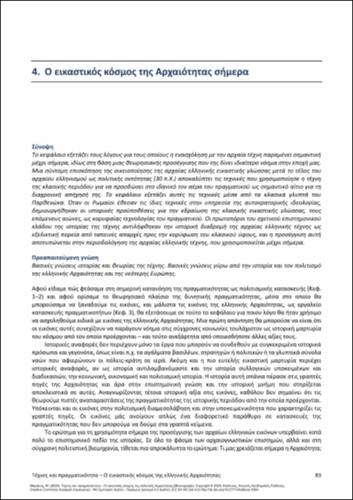| Title Details: | |
|
The visual world of Antiquity today |
|
| Authors: |
Mikrakis, Manolis |
| Description: | |
| Abstract: |
Chapter 4 explores the reasons why engagement with ancient art remains significant today, particularly through a theoretical lens that lends it renewed meaning in our contemporary context. A brief overview of the appropriation of the visual language of ancient Greece following the political end of the ancient Greek world (30 BCE) reveals the techniques employed by Classical art to imbue the ideal with a sense of reality—an important factor in its enduring appeal. The chapter examines these techniques through the example of the Classical sculptures of the Parthenon. When the Romans adapted these same techniques to serve imperial ideology, they established the historical foundations for the consolidation of the Classical visual language, in the ensuing centuries, as a dominant technology of the real. The pioneers of the academic discipline of art history understood the historical trajectory of ancient Greek art as an evolutionary process—from modest beginnings to the culmination in the Classical style. This perspective is reflected in the periodization of ancient Greek art, which continues to inform scholarly discourse to this day.
|
| Linguistic Editors: |
Kalliaras, Dimitrios |
| Graphic Editors: |
Kentrotis, Christos |
| Type: |
Chapter |
| Creation Date: | 11-07-2025 |
| Item Details: | |
| License: |
Attribution - NonCommercial - ShareAlike 4.0 International (CC BY-NC-SA 4.0) |
| Handle | http://hdl.handle.net/11419/14982 |
| Bibliographic Reference: | Mikrakis, M. (2025). The visual world of Antiquity today [Chapter]. In Mikrakis, M. 2025. Arts and reality – The visual world of Greek Antiquity [Monograph]. Kallipos, Open Academic Editions. https://hdl.handle.net/11419/14982 |
| Language: |
Greek |
| Is Part of: |
Arts and reality – The visual world of Greek Antiquity |
| Publication Origin: |
Kallipos, Open Academic Editions |

